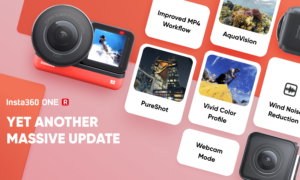Insta360 has amassed quite the fanbase since its beginning in 2014. We spotted them at IFA in 2016 when the Nano was just getting traction and today their cameras are addictive to casual videographers. It’s no wonder that their latest product, Insta360 GO, was a huge success when it launched this August. However, two big drawbacks came up over and over again in reviews and we set out to talk to the team about them.
Indeed, Insta360 GO has on its side the amazing portability, being a thumb-sized camera that doesn’t weigh more than 20 grams. It comes with the stabilization tech that Insta360 cameras are known for and a Flash Cut auto-editing feature that reduces the editing time a user would otherwise spent post-capture.
The range of accessories it comes with makes it perfect to keep in a pocket, attach to a windshield of airplane window and even to your t-shirt, where it almost looks like it flows.
However, it is not a 360-degree cam, but a 180-degree one. More importantly, the length of the videos it’s able to record is limited. Battery life is not ideal, either.
In fact, Insta360 is open about the fact that the Insta360 GO takes videos 15, 30 and 60 seconds long, not more. Its battery life guarantees up to 200 clips of 18 seconds recording per day with a storage that can hold about 100 clips of 15 seconds between transfers.
It does seem as quite the limitation, yet Max Richter, Global Marketing Director at Insta360, is convinced the Insta360 GO audience doesn’t need longer clips. In fact, he believes GO users will find that a video length of 15 to 60 seconds is actually perfect at the end of the day.
How can he be so sure? Find the answer in our talk above from IFA 2019!
Follow TechTheLead on Google News to get the news first.






